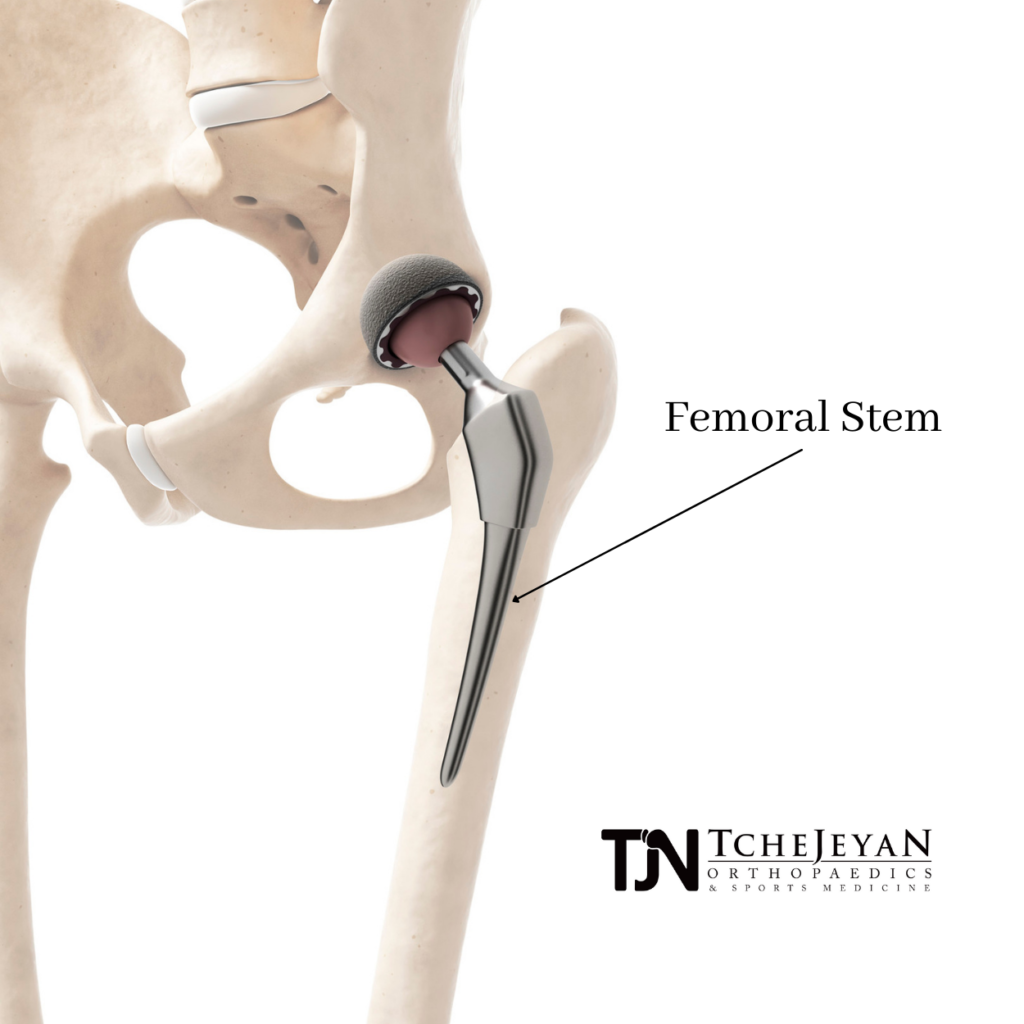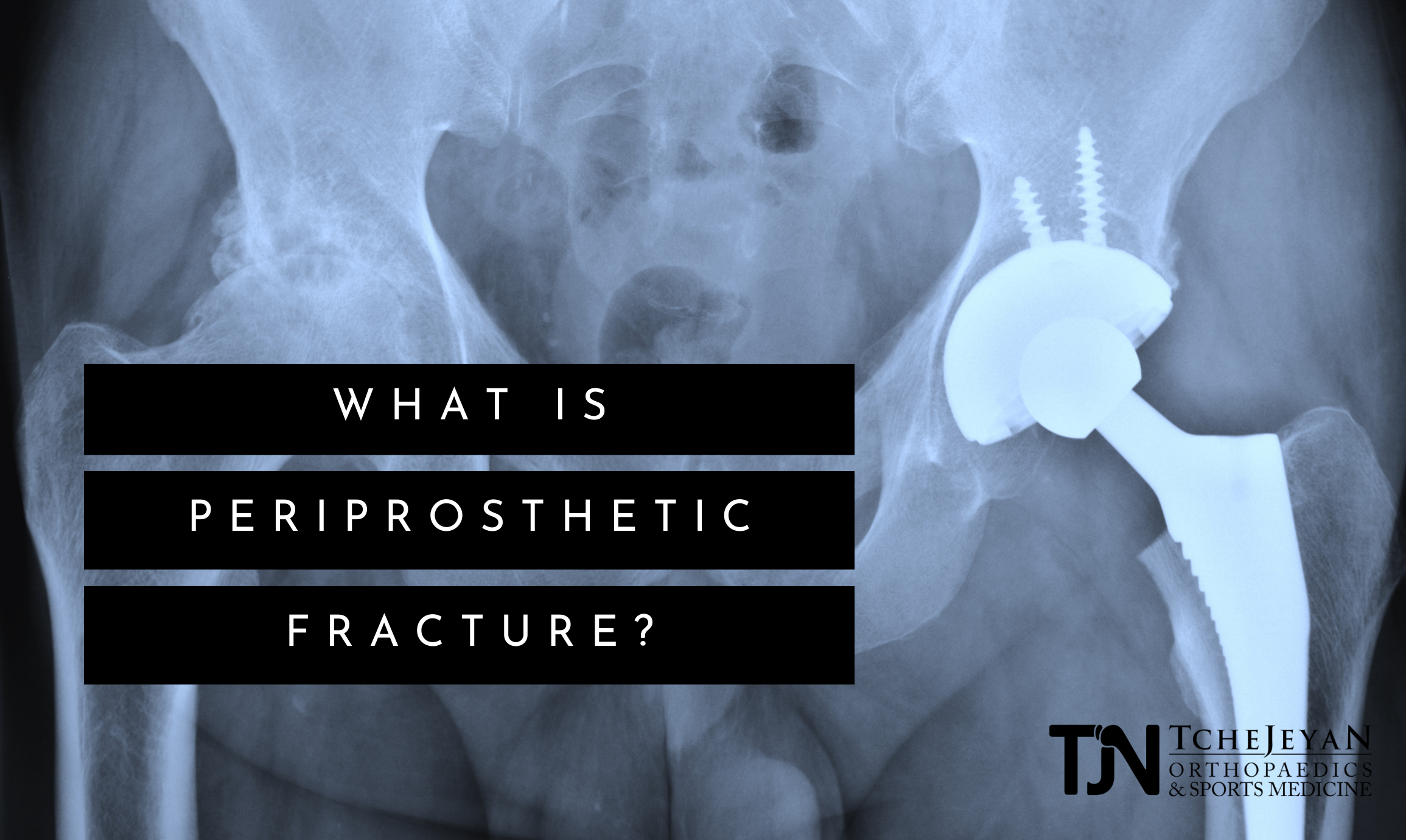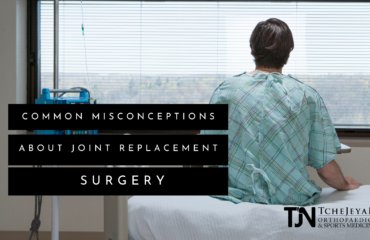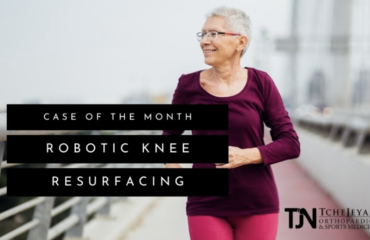A periprosthetic fracture refers to a fracture around a joint replacement – either a hip or a knee. It’s becoming more common because there are more people getting hip and knee replacements. These people are mostly older and therefore experience symptoms like loss of reflexes or muscle atrophy. As a result, we tend to see more injuries from falling.
Unfortunately, it’s rather common for people to fall and break their hips. It’s common for older people with hip replacements to fall, too. If they do, it’s not usually due to a failure of the orthopedic implant, but rather because the bone around the device is weak and will fracture.
In some periprosthetic fractures, the device remains fixed and stable to the bone in which it’s implanted. In other situations, it breaks around the device, and then the device becomes free or loose from the skeleton. When it comes to orthopedic implants, the devices are either cemented in (most common with the knees) or press-fitted or wedged in without cement (more common in hip replacements). This is how the implants are fixed to the bone.
Therefore, if a break occurs below the tip of the prosthesis and the implant stays intact, or if it breaks through the prosthetic area, then it de-bonds from the bone. This fracture pattern will determine the course of treatment.
Don’t Fear A Fracture!
No matter what happens, anything is fixable. If there’s a fracture around a prosthesis and the prosthesis remains stable, meaning it’s not loose from the bone, then we use traditional techniques with screws, plates, and cables to put things back together. If the stem becomes loose, we remove the stem and use a longer one bypassing the fracture.
Understanding Fractures Around Hip Replacements
The most common fracture that we see is around a hip replacement at the tip of the stem. In such cases, it is usually due to stress rising when the stem transitions to the native bone. If, however, the stem becomes loose, the stem would have to be revised at the same time. A surgeon would therefore begin with a repair of the fracture and then revise the stem as well.

The traditional hip replacement stem is around 5 inches long. In the event of a fracture, the 5-inch stem is removed, the fracture is repaired, and then an 8 inch or 10-inch stem is put in place. This longer length allows the stem to go past the fracture into the healthy bone below. The bone can then heal around the device, and then the new device becomes fixed to the skeleton.
Understanding Fractures Around Knee Replacements
Depending on where a fracture occurs around a knee replacement, and primarily in older patients, the surrounding bones are smaller and weaker, which doesn’t give the surgeon a lot of options for attaching screws. Even if the device is well-fixed into the skeleton, it can be difficult to attach screws and plates if there is not enough bone there. Oftentimes, oncology patients experience this and will need to take advantage of distal femoral replacements, or femur replacements made of metal in order to eliminate the fracture and replace the entire end of the femur.
In a fracture, the weak surrounding bone is often the reason the patient fell in the first place. As a result, distal femur replacements are best to use in elderly patients rather than risking another fracture. Recovery is also easier as it allows for weight-bearing immediately post-surgery.
Getting Back On Your Feet
To best heal after a hip surgery like this, your surgeon will likely advise you to avoid putting full weight onto your hip until bones heal around the device (around 4 to 8 weeks). In that time, the fracture repairs itself. In certain cases, however, patients can avoid weight-bearing restrictions by having their frail bone pieces replaced with metal. This is common in hip fractures when patients receive a distal femoral replacement.
When people break their hips or they have a periprosthetic fracture, it’s always important to get weight-bearing as soon as possible. This reduces the risks that accompany staying in bed like blood clots, pneumonia, and all the things that come from not moving. We can facilitate that by doing a distal femur replacement in that very specific fracture.
In orthopedics, other fractures can occur and sometimes be treated with a cast. It truly just depends on what kind of break it is, but breaks are common nonetheless. A qualified surgeon will always work towards stable fixation, and sometimes that means that a distal femoral replacement is better than a frail bone. Patients can therefore mobilize quickly, ensuring an easier recovery. Movement is key to success and to preventing complications that come with lying around.
To stay moving both before and after surgery, stay in touch with Dr. Tchejeyan. He regularly sees his patients throughout the lifespan of their implants or natural joints to determine the best course of action in any scenario. A board-certified orthopedic surgeon, Dr. Tchejyan’s primary goal remains your physical health and wellness. Schedule your consultation today!




